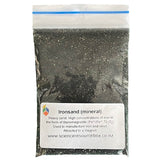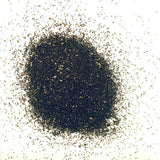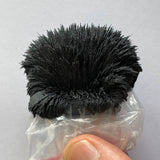We currently have 5 in stock.
Ironsand is a mineral containing high concentrations of iron in the form of titanomagnetite (Fe2+(Fe3+,Ti)2O4).
It is used to manufacture iron and steel, and because of its high iron concentration, it is attracted to a magnet (see third picture; magnet is inside plastic bag).
Size: 100g bag
Locality: North Island, New Zealand.
Some observations and experiments using ironsand
Magnetic properties: Use a strong magnet to demonstrate the magnetic properties of ironsand. Place a piece of paper on top of the magnet and sprinkle some ironsand onto the paper. Observe how the particles align themselves along the magnetic field lines, creating characteristic patterns.
Separation of components: Mix ironsand with regular sand or other non-magnetic materials. Use a magnet to separate the magnetic particles (ironsand) from the non-magnetic components, demonstrating the concept of magnetic separation.
Density experiment: Compare the density of ironsand to regular sand or other materials by measuring their mass and volume. This can be done using a graduated cylinder and a balance. Observe and discuss the differences in density between the different types of sand.
Filtration: Combine ironsand with water and pour the mixture through a filter paper. Observe how the ironsand is captured by the filter while the water passes through. Discuss the concept of filtration and its applications in various industries.
Create a compass: Fill a shallow container with water and float a small piece of cork or foam on the surface. Sprinkle some ironsand on the cork, and then bring a magnet close to the container. Observe how the ironsand aligns with the magnetic field, causing the cork to rotate and point toward the magnet. Discuss the principles behind a compass and its use in navigation.






